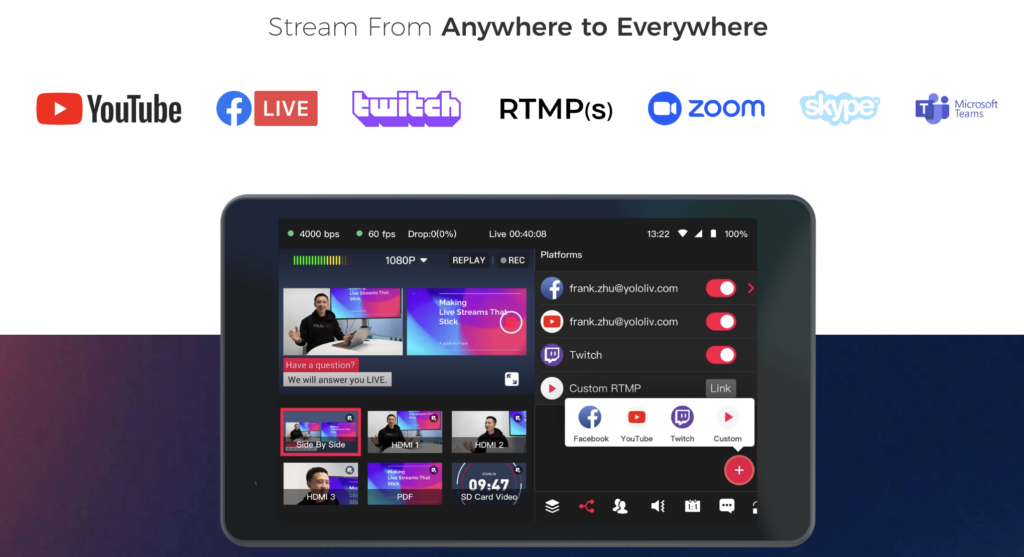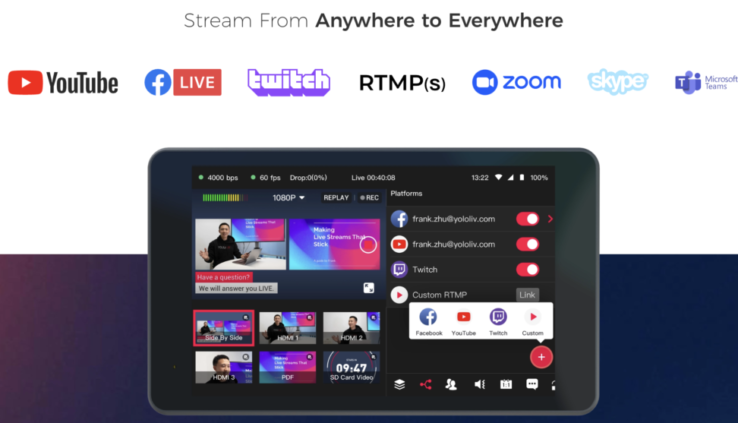Hardware vs. Software Encoding: Which is better for Live Streaming?
By Jennifer P
YoloLiv recently posted an article to their blog detailing the strengths and weaknesses of different types of streaming encoders. The video encoder is an essential component of any streaming setup as it converts the video data from a camera or other source into a format that can be transmitted over the internet for streaming.
What is a Video Encoder?
Without a video encoder, you won’t be able to stream your video content to platforms like Twitch, YouTube, or Facebook, as these platforms require a video stream in a specific format to be able to display it to viewers. The encoder takes the raw video data from the source and compresses it into a digital format that can be easily transmitted over the internet.
There are different types of video encoders available, including software encoders that can run on your computer, and hardware encoders that are separate devices that you can connect to your computer or camera. Both types of encoders have their own advantages and disadvantages, and choosing the right one depends on your specific streaming needs.
Software Encoder
Software encoders use software running on a computer or mobile device to encode video files. They can capture audio and video inputs from cameras, microphones, or other sources and deliver them to streaming platforms like YouTube, Facebook, and Twitch.
Software encoders offer greater flexibility and versatility than hardware encoders since they can be used on any device with sufficient processing power and memory. They also tend to be more cost-effective than hardware encoders since they do not require additional hardware.
There are many software encoders available, ranging from basic tools for home users to professional applications used by media companies. Some popular software encoders include OBS Studio, Streamlabs OBS, Wirecast, and vMix. The choice of software encoder depends on factors such as the user’s technical expertise, the level of features needed, and the available budget.
Hardware Encoder
Hardware encoders use dedicated chips or processors to perform the video encoding as an independent device. They are often used in professional settings such as live streaming and broadcasting, where high-quality video and low latency are essential.
Hardware encoders can offer advantages such as higher performance, better video quality, and lower latency compared to software encoders. They are also more reliable since they use dedicated hardware components designed specifically for video encoding.
One example of a hardware encoder is the YoloBox Pro. It is an all-in-one live production system that can simultaneously stream to multiple destinations such as Facebook, YouTube, and other RTMP(S) websites. It includes built-in battery and 4G connectivity, allowing you to stream from anywhere to everywhere.

Which is Better for Live Streaming?
When it comes to choosing between software and hardware encoders for live streaming, there is no one-size-fits-all answer. Both types of encoders have their own advantages and disadvantages, and the choice between them depends on various factors, such as the required video quality, available budget, and level of technical expertise.
Pros and Cons of Software Encoder
pros:
- Cost-effectiveness: generally it is less expensive than hardware encoders, and usually has monthly paid solutions.
- Compatibility: It is compatible with a broad range of devices and platforms, making it accessible to large users.
- Software updates: It is easy to add new features by updating the software
Cons:
- Quality: it may produce lower-quality output than hardware encoders, particularly when encoding at high bitrates or using complex encoding settings.
- Reliability: it is more prone to errors or crashes than hardware encoders, particularly if the computer running the software encoder is under heavy load.
- Resource-intensive: it requires a powerful computer with plenty of RAM and processing power to achieve optimal performance.
Pros and Cons of Hardware Encoder
Pros:
- Reliability: You don’t need to worry about the screen freezes of your laptop and losing your data.
- Efficiency: Performing and encoding much faster than software encoders, resulting in lower CPU usage and better overall performance.
- Quality: it can produce higher-quality output than software encoders, particularly when it comes to video encoding.
- Lower Latency: it is specifically designed to minimize latency and provide real-time encoding. This makes them ideal for live streaming applications where low latency is essential.
Cons:
- Upgrade challenges: Upgrading a hardware encoder is more difficult than upgrading software. It may require the addition of new hardware components or the replacement of the entire unit.
- Cost: It comes with a high cost, especially for professional-grade models.
- Limited customization: It has limited customization options, and users may not be able to fine-tune the encoding parameters to achieve the desired output quality.
Read the full article from YoloLiv HERE
Learn more about YoloLiv YoloBox Pro HERE
Learn more about YoloLiv HERE

